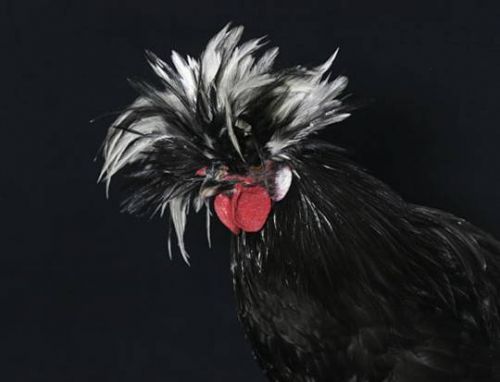|
|
Chickens And Roosters
|
A northern road spread chicken to the Tarim basin of central Asia, modern day Iran. The chicken reached Europe (Romania, Turkey, Greece, Ukraine) about 3000 BC. Introduction into Western Europe came far later, about the 1st millennium BC. Phoenicians spread chickens along the Mediterranean coasts, to Iberia. Breeding increased under the Roman Empire, and was reduced in the Middle Ages. Middle East traces of chicken go back to a little earlier than 2000 BC, in Syria; chicken went southward only in the 1st millennium BC. The chicken reached Egypt for purposes of cock fighting about 1400 BC, and became widely bred only in Ptolemaic Egypt (about 300 BC). Little is known about the chicken's introduction into Africa. Three possible ways of introduction in about the early first millennium AD could have been through the Egyptian Nile Valley, the East Africa Roman-Greek or Indian trade, or from Carthage and the Berbers, across the Sahara. The earliest known remains are from Mali, Nubia, East Coast, and South Africa and date back to the middle of the first millennium AD. Domestic chicken in the Americas before Western conquest is still an ongoing discussion, but blue-egged chicken, found only in the Americas and Asia, suggest an Asian origin for early American chickens.
A lack of data from Thailand, Russia, the Indian subcontinent, Southeast Asia and Sub-Saharan Africa makes it difficult to lay out a clear map of the spread of chickens in these areas; better description and genetic analysis of local breeds threatened by extinction may also help with research into this area.
• Current
Under natural conditions, most birds lay only until a clutch is complete, and they will then incubate all the eggs. Many domestic hens will also do this–and are then said to "go broody". The broody hen will stop laying and instead will focus on the incubation of the eggs (a full clutch is usually about 12 eggs). She will "sit" or "set" on the nest, protesting or pecking in defense if disturbed or removed, and she will rarely leave the nest to eat, drink, or dust-bathe. While brooding, the hen maintains the nest at a constant temperature and humidity, as well as turning the eggs regularly during the first part of the incubation. To stimulate broodiness, an owner may place many artificial eggs in the nest, or to stop it they may place the hen in an elevated cage with an open wire floor.
|
|









